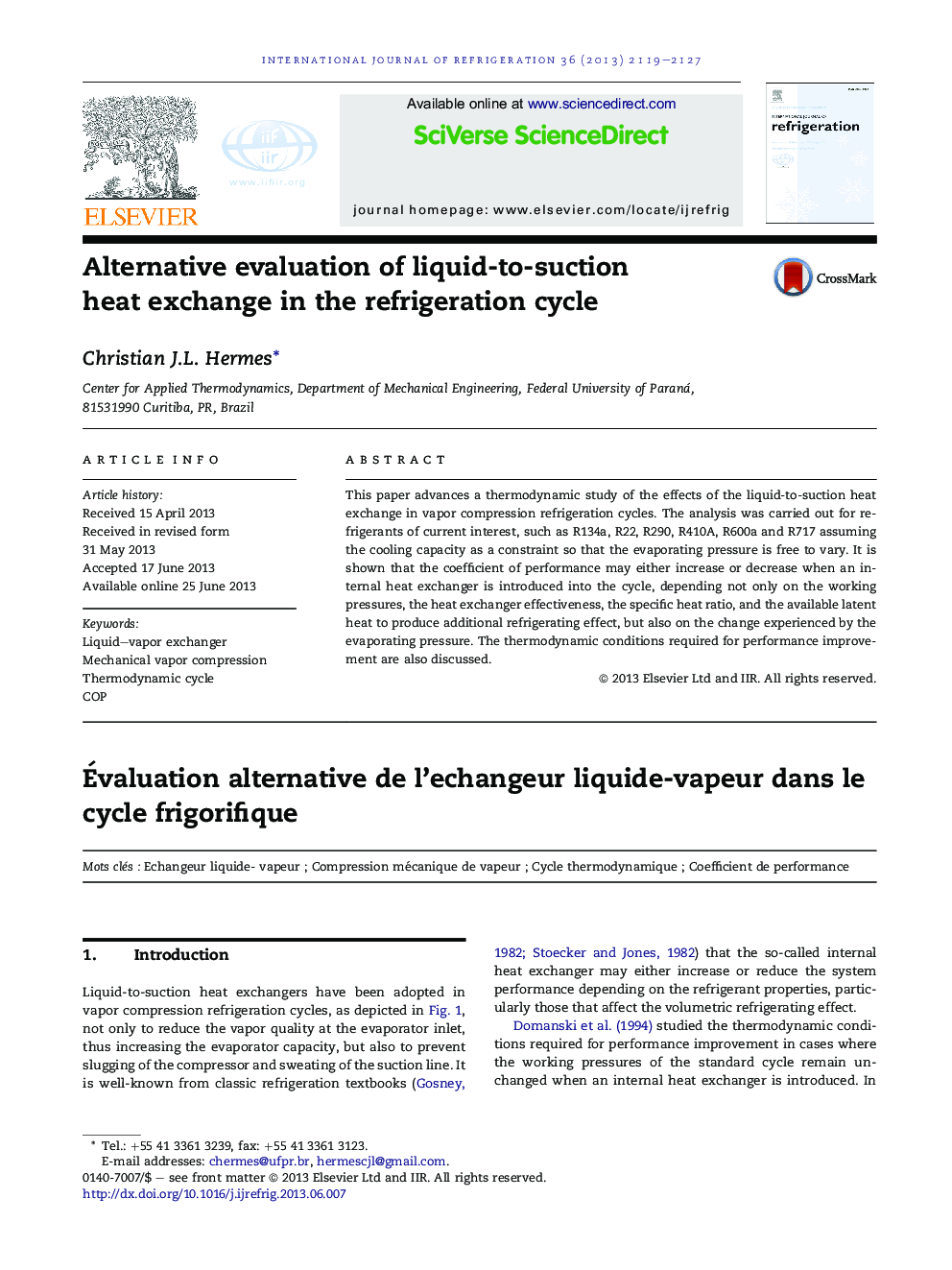| Article ID | Journal | Published Year | Pages | File Type |
|---|---|---|---|---|
| 788710 | International Journal of Refrigeration | 2013 | 9 Pages |
•A thermodynamic study of the liquid-to-suction heat exchange is performed.•The exercise is carried out for refrigerants R134a, R22, R290, R410A, R600a and R717.•The cooling capacity is taken as a constraint so that the evaporating pressure can vary.•The thermodynamic conditions required for performance improvement are discussed.
This paper advances a thermodynamic study of the effects of the liquid-to-suction heat exchange in vapor compression refrigeration cycles. The analysis was carried out for refrigerants of current interest, such as R134a, R22, R290, R410A, R600a and R717 assuming the cooling capacity as a constraint so that the evaporating pressure is free to vary. It is shown that the coefficient of performance may either increase or decrease when an internal heat exchanger is introduced into the cycle, depending not only on the working pressures, the heat exchanger effectiveness, the specific heat ratio, and the available latent heat to produce additional refrigerating effect, but also on the change experienced by the evaporating pressure. The thermodynamic conditions required for performance improvement are also discussed.
